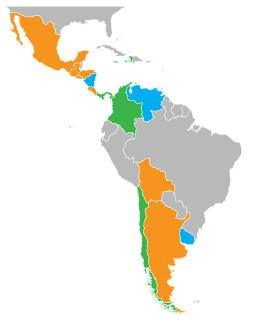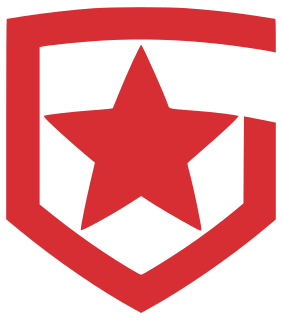In the English language, a split infinitive or cleft infinitive is a grammatical construction in which a word or phrase is placed between the particle to and the infinitive that comprise a to-infinitive. In traditional English grammar, the bare infinitive is extended by the particle to in order to produce the to-infinitive phrase, to go.

Lepidoptera is an order of insects that includes butterflies and moths. About 180,000 species of the Lepidoptera are described, in 126 families and 46 superfamilies, 10 percent of the total described species of living organisms. It is one of the most widespread and widely recognizable insect orders in the world. The Lepidoptera show many variations of the basic body structure that have evolved to gain advantages in lifestyle and distribution. Recent estimates suggest the order may have more species than earlier thought, and is among the four most speciose orders, along with the Hymenoptera, Diptera, and Coleoptera.

Lymantria dispar, the gypsy moth, is a species of moth in the Erebidae family. Lymantria dispar is subdivided into several subspecies, with subspecies such as L. d. dispar and L. d. japonica being clearly identifiable without ambiguity. Lymantria dispar has been introduced to several continents and is now found in Europe, Africa, Asia, North America and South America. The polyphagous larvae live on a variety of deciduous and coniferous trees and can cause severe damage in years of mass reproduction. Due to these features, the gypsy moth is listed among the world's 100 most invasive alien species.
Modern English is the form of the English language spoken since the Great Vowel Shift in England, which began in the late 14th century and was completed in roughly 1550.

A pupa is the life stage of some insects undergoing transformation between immature and mature stages. The pupal stage is found only in holometabolous insects, those that undergo a complete metamorphosis, with four life stages: egg, larva, pupa, and imago. The processes of entering and completing the pupal stage are controlled by the insect's hormones, especially juvenile hormone, prothoracicotropic hormone, and ecdysone. The act of becoming a pupa is called pupation, and the act of emerging from the pupal case is called eclosion or emergence.

Enrique Miguel Iglesias Preysler is a Spanish-American singer, songwriter, record producer, and actor. He started his recording career in the mid nineties on Mexican indie label Fonovisa and became one of the the best selling Spanish language act of the decade. By the turn of the millennium after Ricky Martin created the Latin explosion in the U.S Enrique made a successful crossover into the mainstream English language market. He signed a multi-album deal with Universal Music Group for US$68 million with Universal Music Latino to release his Spanish albums and Interscope Records to release English albums.

The Luna moth is a Nearctic moth in the family Saturniidae, subfamily Saturniinae, a group commonly known as giant silk moths. It has lime-green colored wings and a white body. The larvae (caterpillars) are also green. Typically, it has a wingspan of roughly 114 mm (4.5 in), but can exceed 178 mm (7.0 in), making it one of the larger moths in North America. Across Canada, it has one generation per year, with the winged adults appearing in late May or early June, whereas farther south it will have two or even three generations per year, the first appearance as early as March in southern parts of the United States.

Pisum is a genus of the family Fabaceae, native to southwest Asia and northeast Africa. It contains one to five species, depending on taxonomic interpretation; the International Legume Database (ILDIS) accepts three species, one with two subspecies:

The geometer moths are moths belonging to the family Geometridae of the insect order Lepidoptera, the moths and butterflies. Their scientific name derives from the Ancient Greek geo γεω, and metron μέτρον "measure" in reference to the way their larvae, or "inchworms", appear to "measure the earth" as they move along in a looping fashion. A very large family, it has around 23,000 species of moths described, and over 1400 species from six subfamilies indigenous to North America alone. A well-known member is the peppered moth, Biston betularia, which has been subject of numerous studies in population genetics. Several other geometer moths are notorious pests.

Solin is a town in Dalmatia, Croatia. It is situated right northeast of Split, on the Adriatic Sea and the river Jadro.

The Apertura[apeɾˈtuɾa] and Clausura[klawˈsuɾa] tournaments is a split season format for Spanish-speaking sports leagues. It is a relatively recent innovation for many Latin American football leagues in which the traditional association football season from August to May is divided in two sections per season, each with its own champion. Apertura and Clausura are the Spanish words for "opening" and "closing". In French-speaking Haiti, these are known as the Ouverture and the Fermeture, while in English-speaking Belize, they are respectively the Opening and Closing seasons. When used in the United States and Canada, they are known as the Spring and Fall seasons.

The feathered thorn is a moth of the family Geometridae. It was first described by Carl Linnaeus in 1761.

The grey dagger is a moth of the family Noctuidae.

Split is Croatia's second-largest city and the largest city in the Dalmatia region. It lies on the eastern shore of the Adriatic Sea and is spread over a central peninsula and its surroundings. An intraregional transport hub and popular tourist destination, the city is linked to the Adriatic islands and the Apennine peninsula.

The Erebidae are a family of moths in the superfamily Noctuoidea. The family is among the largest families of moths by species count and contains a wide variety of well-known macromoth groups. The family includes the underwings (Catocala); litter moths (Herminiinae); tiger, lichen, and wasp moths (Arctiinae); tussock moths (Lymantriinae), including the arctic woolly bear moth ; piercing moths ; micronoctuoid moths (Micronoctuini); snout moths (Hypeninae); and zales, though many of these common names can also refer to moths outside the Erebidae. Some of the erebid moths are called owlets.
The South Region was a region that competed in the Little League World Series between 1957 and 2000 until it was split into the Southwest and Southeast regions in 2001.

Lymantria dispar dispar, commonly known as the gypsy moth, European gypsy moth, or North American gypsy moth, is a species of moth in the family Erebidae that is of Eurasian origin. It has a range that extends over Europe, Africa, and North America.

Speranza is a genus of moths in the family Geometridae erected by John Curtis in 1828.

Gambit Esports, formerly Gambit Gaming, is a Russian esports organisation owned by telecommunications company MTS. It was established in January 2013 after the acquisition of the former League of Legends roster of Moscow Five.

A MONA number, or Hodges number after Ronald W. Hodges, is part of a numbering system for North American moths found north of Mexico in the Continental United States and Canada, as well as the island of Greenland. Introduced in 1983 by Hodges through the publication of Check List of the Lepidoptera of America North of Mexico, the system began an ongoing numeration process in order to compile a list of the over 12,000 moths of North America north of Mexico. The system numbers moths within the same family close together for identification purposes. For example, the species Epimartyria auricrinella begins the numbering system at 0001 while Epimartyria pardella is numbered 0002.


















